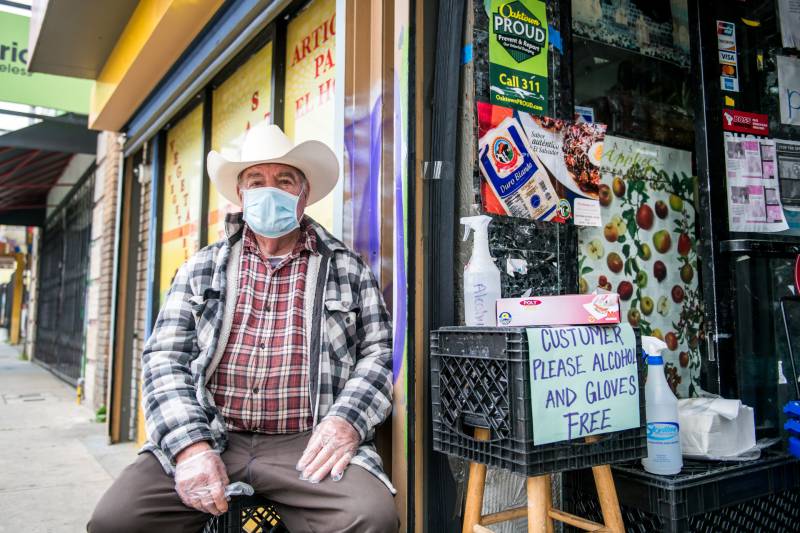Do you have a question about the coronavirus? Ask us below.
Updated May 13, 4:30 p.m.
The outbreak of novel coronavirus has dominated the news cycle and upended communities across the globe. As we’ve been reporting on this, we’ve come across a lot of myths, questions and worries from our audience about how this outbreak might impact our lives. We’ve tried to answer a few questions and want to continue to take on your specific concerns.
Jump to a topic area:
- Transmission
- Masks
- Grocery Stores and Restaurants
- Data
- Hospitals and Health Care Workers
- Testing
- Social Distancing
- Sheltering in Place
- Going to Work
- Government Response
- Travel
- Symptoms
- Vulnerable Populations
- Homeless Populations
- Kids
- Pets
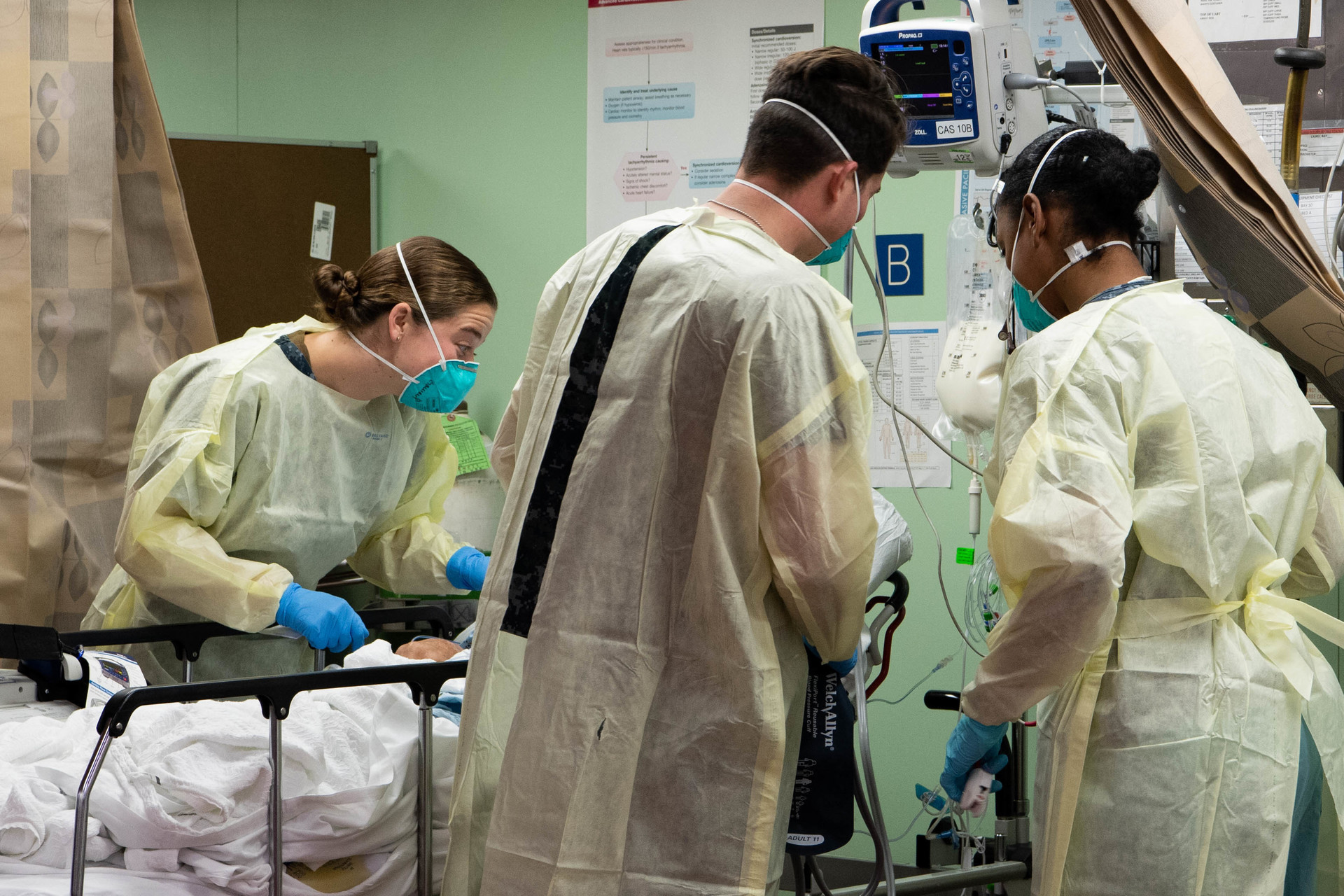
Transmission
Q: What happens after someone recovers from a novel coronavirus infection? Are they still contagious? Can they get the infection again?
This is still a big area under investigation. A new study is reporting that macaque monkeys developed immunity after infection with the virus. However, the study hasn’t been peer reviewed. And so far there’s no published research on how long patients may be contagious after their symptoms resolve.
Q: How long does COVID-19 survive on various surfaces? Some examples: unwashed human skin, on breath moisture floating in the air, on doorknobs?
The latest research shows that COVID-19 can survive in airborne droplets for up to two to three days on plastic and stainless steel.
There isn’t research on how long COVID-19 specifically survives on unwashed human skin. Nonetheless, hand washing is still one of the best ways to protect yourself from contracting coronavirus.
Q: Since the virus could persist on surfaces, should I refrain from mailing packages to others that are considered vulnerable?
According to the WHO, the “likelihood of an infected person contaminating commercial goods is low and the risk of catching the virus that causes COVID-19 from a package that has been moved, traveled and exposed to different conditions and temperature is also low.”
Q: How is it spread in asymptomatic, COVID-19 positive people who are not coughing or sneezing?
Even if they aren’t coughing or sneezing, people who have contracted COVID-19 can still spread the disease by touching their faces and shedding the virus onto other surfaces, or by respiratory droplets produced by talking or sneezing. This is why hand washing and avoiding close contact with others is crucial to prevent the spread of the coronavirus. However, according to the WHO, the risk of contracting the novel coronavirus from someone who has no symptoms at all is very low.
Q: What can a person do — pre-infection or in early stages — to increase the likelihood that it won’t become a severe case?
There is currently no specific medicine or treatment for the novel coronavirus. Experts are recommending people minimize the chance of catching the infection by practicing good hygiene and social distancing.
According to Stanford University’s Dr. Alexei Wagner, “the best way to prepare your body for a potential infection is to make sure you are staying healthy.”
The virus has been shown to be more severe in older patients and those with chronic disease. Dr. Wagner recommends continuing to take medications as prescribed, controlling blood pressure if you have hypertension and making sure sugar levels are normal if you have diabetes.
“If you do contract COVID-19, make sure you speak with your doctor or other state health care worker. We recommend staying well hydrated, treating fevers, eating healthily and monitoring symptoms,” said Wagner.
There are a few randomized trials that show that supplements like vitamin C and zinc lessen the severity of the common cold, but the U.S. Food and Drug Administration has not approved the safety and effectiveness of dietary supplements. There is currently no published research that supports the claim that either zinc or vitamin C can help treat or prevent COVID-19.
The FDA and the Federal Trade Commission (FTC) have also sent warnings to companies for selling fraudulent cures and treatments for coronavirus, including colloidal silver supplements, essential oils and elderberry teas.
Q: Is there a benefit to the immune system to occasional exposure to a very small amount of the virus?
When KQED put this question to Dr. Dean Winslow, professor of medicine at Stanford University and an expert on infectious diseases, he said, “No. That would be very dangerous. It’s like the analogy we used to say of someone being ‘just a little bit pregnant.’ ”
Winslow said that the question does have its roots in an ancient practice that predates vaccinations.
“Before we actually use vaccinia to prevent smallpox, sometimes people would actually expose people, often children, to very small amounts of variola [smallpox viruses],” Winslow said. “However, that was very, very risky, and a lot of the children died of smallpox.”
He said what we really need to focus on is the development of a coronavirus vaccine. “This, of course, would be an inactivated virus, that itself would be incapable of causing disease,” Winslow said.
— Chloe Veltman
Q: I’ve heard rumors that you can make your own hand sanitizer. If so, how? I couldn’t find anything on CDC’s website.
It is possible to make your own hand sanitizer. There are several videos demonstrating how to do it online. The main ingredients are rubbing alcohol and aloe vera. Here’s one short video that explains the method.
However, the Centers for Disease Control and Prevention (CDC) recommends thorough hand washing with soap and water over the use of hand sanitizers: “Alcohol-based hand sanitizers can quickly reduce the number of microbes on hands in some situations, but sanitizers do not eliminate all types of germs.”
Additionally, beware of false claims that vodka can be used to make effective hand sanitizer. Vodka’s alcohol content — 35-46% alcohol by volume — is not powerful enough to battle the coronavirus.
Q: The WHO says close contact is 3 feet or less. Australia says 4.5 feet. Where does the 6 feet rule come from?
Like much of the news surrounding COVID-19, the question of what distance between two people constitutes as safe is a bit of a moving target. The discrepancies in the definition of “close contact” are based on different, and potentially outdated, scientific research.
During the SARS outbreak of 2002-2003, health officials recommended 3 feet of distance between people. With COVID-19, the CDC has upped its recommendation to 6 feet of clearance. That’s because the tiny droplets of mucus or saliva that carry the virus can typically spread 3-5 feet.
However, recent research from the Massachusetts Institute of Technology suggests that 6 feet may not be enough.
The authors of a new study published last week in the Journal of the American Medical Association state that: “Although such social distancing strategies are critical in the current time of pandemic, it may seem surprising that the current understanding of the routes of host-to-host transmission in respiratory infectious diseases are predicated on a model of disease transmission developed in the 1930s that, by modern standards, seems overly simplified.”
Researchers say viral particles can travel as far as 23 to 27 feet under the right conditions, and more investigation is needed to know definitively what distance is safe.
Q: Is it OK to kiss or have sex with your spouse that you are sheltering in place with?
Though the CDC and WHO haven’t directly given guidance about sex during the time of coronavirus, we know that the virus is spread from person to person through small droplets from the nose or mouth, making kissing an easy way for transmission to happen.
The New York City Health Department released a guide to intimacy during the time of coronavirus. First and foremost, the department said, “You are your safest sex partner.” Your next safest partner is someone living in your household, but the department advised people to avoid close contact with anyone outside their household — including sexual activity.
The guide also recommends avoiding sex and kissing if you or your partner isn’t feeling well, may have COVID-19 or a medical condition that makes them especially vulnerable to the virus.
Q: Mi preocupación es: se puede o no trasmitir el Covid 19 a través de las carnes frescas? // My concern is: Is it possible to transmit COVID-19 through fresh meats? (Leer en español)
According to the CDC, there is currently “no evidence to support transmission of COVID-19 associated with food.”
Before eating or preparing food, you should make sure to follow good hygiene practices — washing your hands for at least 20 seconds with soap and water — and follow food safety guidelines.
You can find more about food safety from the CDC here.
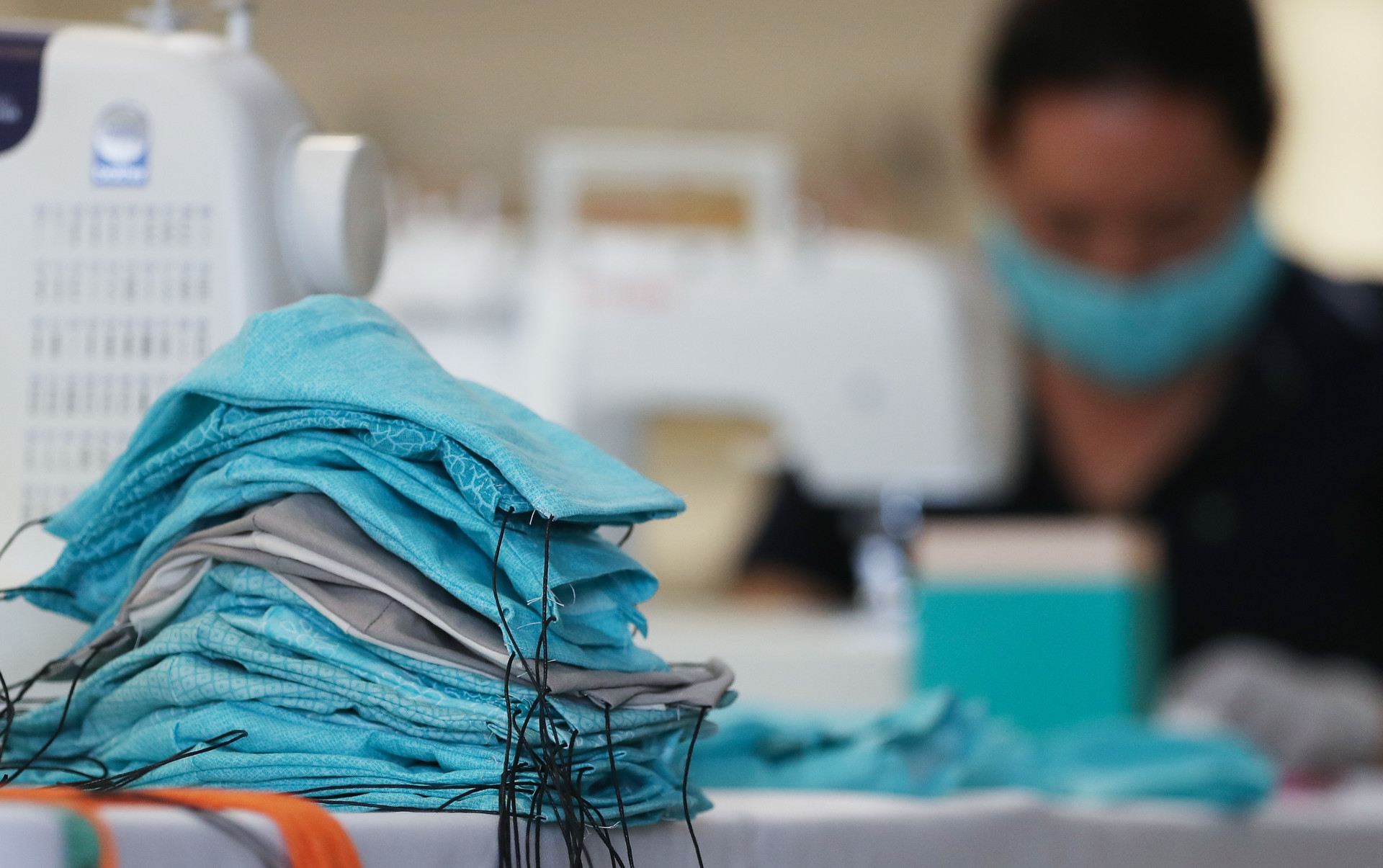
Masks
Q: Why does it not help to wear a mask, such as a tight fitting dust mask, since one way the infection is spread is by droplets in the air?
On April 17, several Bay Area counties issued orders requiring residents and workers to wear face coverings at grocery stores, medical offices and other essential businesses and on public transit as part of the city’s increasingly aggressive efforts to stem the spread of the coronavirus. Face coverings will also be required while waiting in line for any essential service, and while waiting for public transit.
Under the order, residents and workers are not required to wear face coverings in their homes or cars, or while walking, running, hiking, or bicycling, but are encouraged to always keep one handy.
As of April 1, the California Department of Public Health (CDPH) recommended that residents use face coverings, like cloth masks or bandannas, when going outside to perform essential activities. On April 3, the CDC issued similar guidance.
Officials are still encouraging people not to use N95 or surgical masks to ensure there’s enough in stock for health care workers.
Q: Is it possible to disinfect disposable surgical gloves and N95 masks for reuse for activities like going to the grocery store?
There is no recommended method of disinfecting disposable gloves. If you don’t have enough disposable gloves for when you come into contact with coronavirus, the CDC recommends dedicating reusable gloves to this purpose and disinfecting according to the glove manufacturer’s instructions.
There is no method of disinfecting an N95 respirator for personal use that effectively kills viruses and bacteria and does not compromise the filtration capabilities of the respirator. If you are planning to reuse a mask, the CDC has laid out its best practices for health care workers — including washing your hands before and after removing or putting on the mask, avoiding touching the inside or outside of the mask, storing your mask in a clean paper bag between uses and disposing of the storage bag between uses.
If you have unopened and unused PPE, you can find information on where to donate here. If you are at a higher risk of severe illness from COVID-19, the CDC has information on how to protect yourself here.
Q: If I have unused N95 masks I want to donate, where can I do so?
Bay Area medical facilities and grassroots organizations are accepting donations of N95 masks, which some Californians may have left over from wildfire season. There’s also need for other medical supplies like gloves, hand sanitizer, face shields and protective eyewear. Get the latest on where and how to donate.
Q: Has the #millionmaskchallenge (cloth masks) been confirmed as a viable option for the medical community to use?
Medical officials in the Bay Area are largely not accepting homemade masks.
According to CDC guidelines, homemade masks can be used by health care professionals as a last resort, but their ability to protect health care providers remains unknown.
Cloth masks are a good option for residents to wear while using essential services, to comply with the Bay Area’s face mask requirement.
If you have extra industrially made masks or other gear that you would like to donate, we’ve reported on where you can donate here.
Q: Where can I obtain the best pattern(s) for making masks at home? 2) Which fabrics are best for protection and hot-water machine wash?
There is limited data on what kind of homemade mask is best for protection, but the CDC suggests using cotton fabric in its tutorial for sewing a mask. The website also provides instructions for masks that don’t require sewing, including one made from a T-shirt and another with a coffee filter and bandanna.
The CDC recommends homemade masks should:
- Fit snugly but comfortably against the side of the face
- Be secured with ties or ear loops
- Include multiple layers of fabric
- Allow for breathing without restriction
- Be able to be laundered and machine dried without damage or change to shape
Here are additional mask patterns from John Hopkins Medicine and Kaiser Permanente, which recommend washing your fabric beforehand to prevent the mask from changing shape.
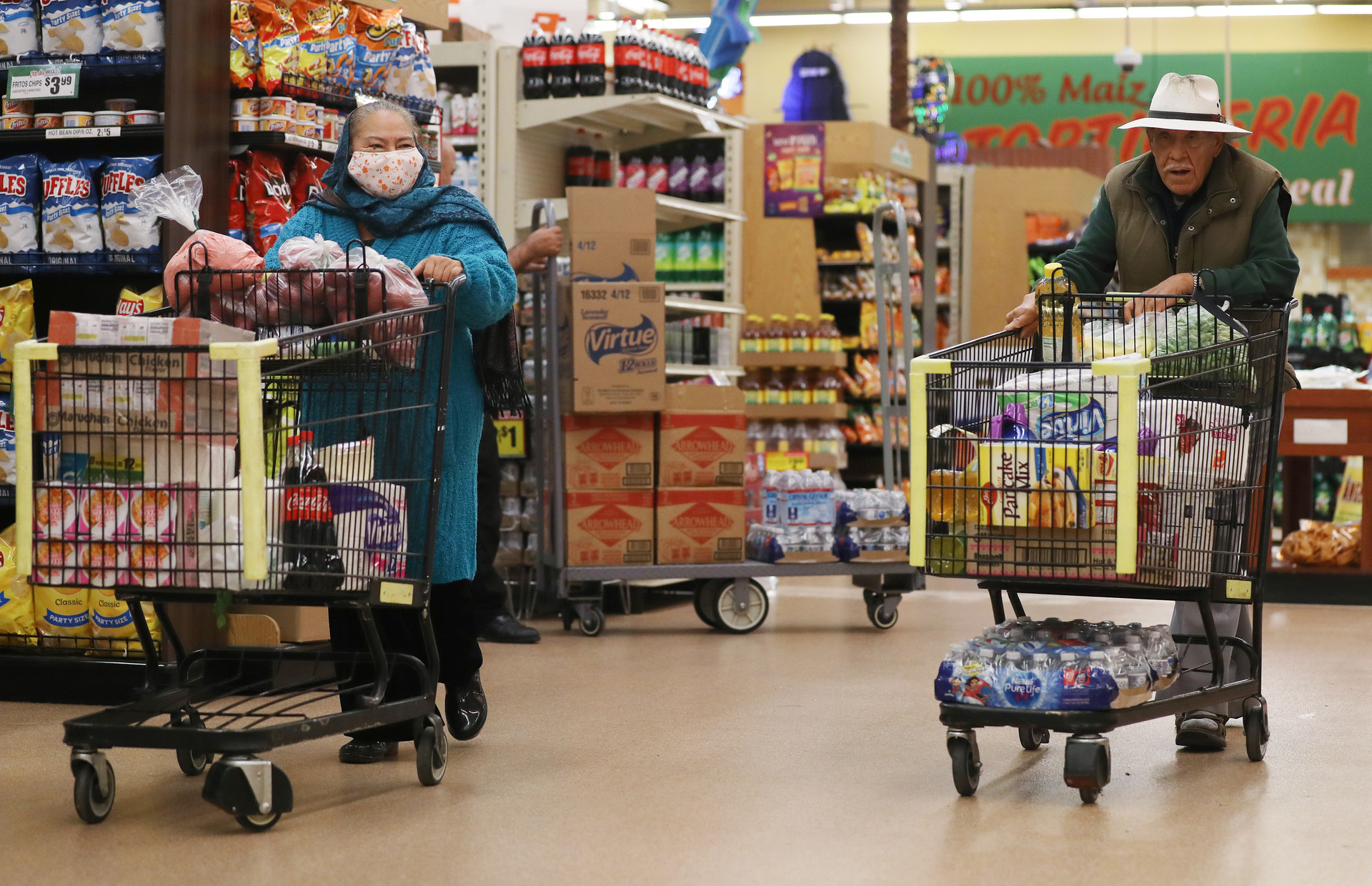
Grocery Stores and Restaurants
Q: Is it safe to order food to go from local restaurants? I want to keep supporting my favorite eateries but I’m worried.
It’s a good idea to support local businesses, which are being hit particularly hard during this crisis. According to the CDC and the U.S. Food and Drug Administration (FDA), there is currently no evidence that COVID-19 is a foodborne illness. Of course, follow social distancing guidelines and practice good hygiene when you go to the restaurant or receive your delivery.
If you are part of an at-risk population — or would like to be extra careful — wear gloves when you go to receive the food. When you get home to eat, remove the packaging, throw away the gloves and then wash your hands again before eating.
Q: Local grocery stores have empty shelves. Going forward, what are their plans to replenish their shelves? — Asked by Ellyn Hunt
Experts are saying the reason that we’re seeing empty shelves is because people are overbuying.
According to Ronald Fong, the CEO of California Grocers Association, “We’re seeing some customers that are literally buying for three months or six months … if we continue this type of shopping pattern, there’s no way our distribution channels can catch up with that kind of volume.”
Fong said there is enough supply, ranging from paper products to food, to go around but grocery distributors need a couple weeks to get things back to normal. Read more on purchasing groceries during the pandemic here.
Q: How can we safely buy food in a grocery store? Should we wipe down all packages after we get home? Wash produce with soap?
For a complete guide on how to purchase groceries safely and efficiently during the COVID-19 outbreak, go here.
Data
Q: What is the best source of information for pandemic infection rates and mortality in real time? Globally, in U.S., by state, by locality? — Asked by Joanna Iliff
You can check out our app that’s updated daily for confirmed cases of COVID-19 and deaths by county in California. We’re also hoping to release some other ways to view and access local, California data soon.
Currently, there is no one place to go for real-time information on the numbers of confirmed COVID-19 cases and deaths on a local level. This is something everyone seems to want, but no one quite fully has in the United States. Partially because public health departments here track cases and deaths, then send that information to the state and the CDC. That chain is partially why some of the most reliable datasets can also sometimes be a few days behind on local information, including the dataset from the California Department of Public Health, Johns Hopkins Center for Systems Science and Engineering, The New York Times and the COVID Tracking Project.
It’s also why you may notice that data from some news organizations, state agencies, the CDC and research centers might not match on a daily basis.
Q: In addition to the number of positive cases of COVID-19, I’d like to know how many people are getting tested. — Asked by Jenny Buchanan
While data on confirmed cases of COVID-19 exist; testing data is very spotty.
Many experts agree that the United States is currently undertesting for COVID-19. The California Department of Public Health officials told KQED in an email that their capacity to test is “dependent upon availability of test kits from the CDC.”
In the meantime, California is trying to bring more labs online so that they can process more tests as things ramp up.
There is some data out there, though. Several local public health departments publish testing data. The CDC does report on testing, although the data is often a few days behind what public health departments report. The COVID Tracking Project is also bringing in testing numbers from a variety of sources. Also, The Lancet maintains a dataset that includes test cases.
It’s also important to keep in mind that one test does not equal one person tested. Some people may be tested more than once.
Hospitals and Health Care Workers
Q: What are best practices for sheltering in place with someone who is an essential worker? Specifically a health care professional?
Here is information on how and when to clean your house, as well as guidelines for preventing the spread of coronavirus at home.
A recent article from the Journal of the American Medical Association said while evidence is unclear, it may be a good idea for health care workers to take off their shoes, remove and wash clothing, and immediately shower when returning home from work. Additionally, workers may consider changing out of personal clothing into their scrubs upon arrival to work, and then changing back to personal clothes before returning home.
Q: Are there any plans for training people with no medical background to help address the health care worker shortage/exhaustion?
Not yet. Because medical care can only be provided by those with extensive training, health care providers are largely looking for people with medical backgrounds to volunteer.
If you’re not a medical professional, you can find more information on what you can do to help here.
Q: Will services like maternity wards be negatively impacted if hospitals need “all hands on deck” for COVID-19?
It’s unlikely. According to Dr. Alexei Wagner, assistant professor of emergency medicine at Stanford University, “Hospitals are working hard for contingency plans that will allow the safe care of all patients.”
Wagner said hospitals are more concerned that surges of critically ill patients could cause a strain on ICUs and emergency departments, not on the maternity ward.
You can find more information on COVID-19 and how it relates to pregnancy here.
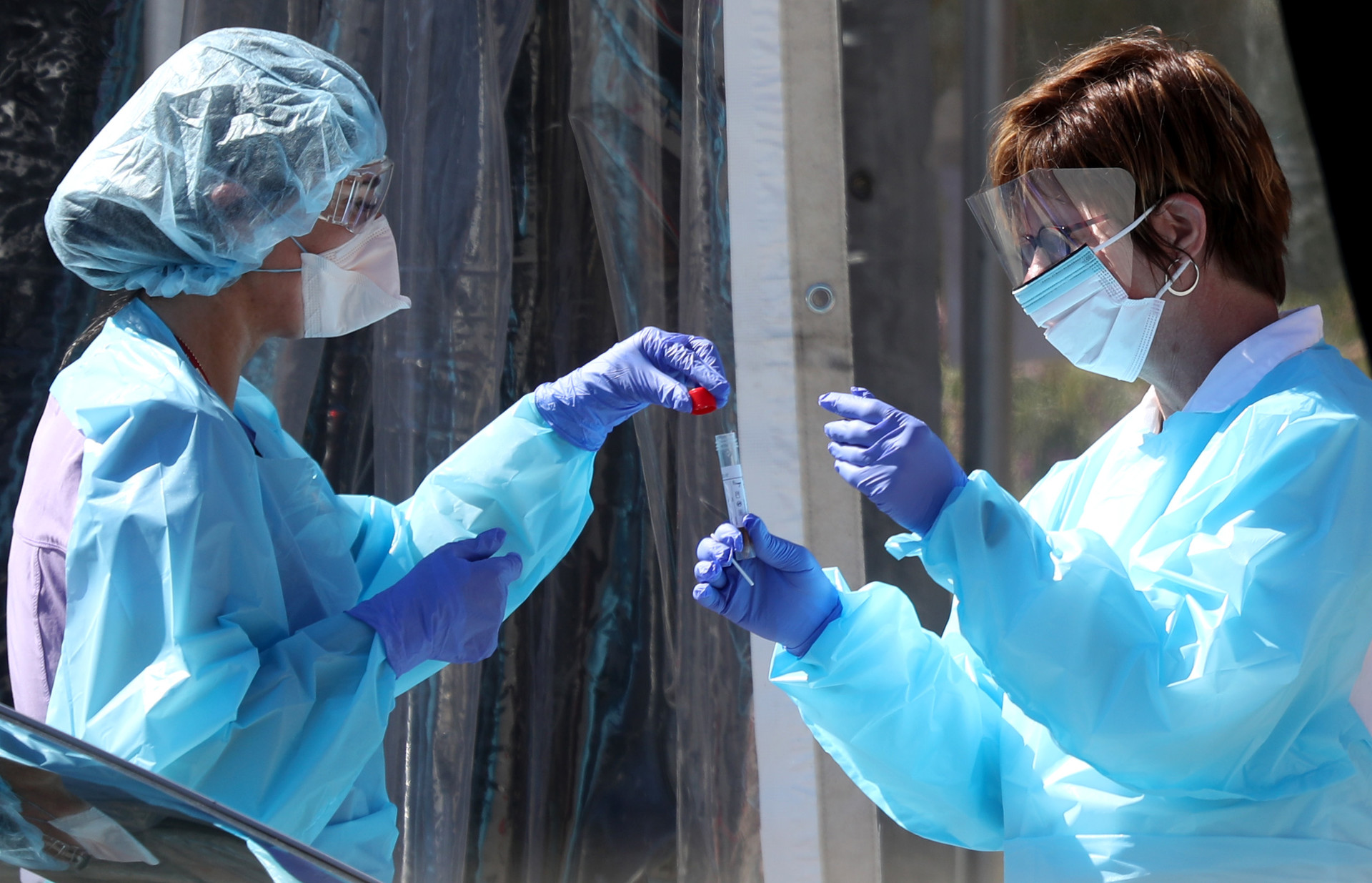
Testing
Q: Where can I get tested?
Start by checking with your doctor’s office. Many health care providers around the Bay Area are conducting tests and some even offer drive-through locations. Some counties have specific requirements in order to qualify for a test, others are open to anyone.
For more information, you can check out this map.
Q: Who qualifies for the test?
Each health care provider and county has different criteria. Some require that people have a certain number of symptoms or are front-line health workers, for example. Other counties now have enough tests that anyone who wants one can get one, provided they make an appointment.
Q: How long does it take to get the results?
That varies quite a bit. Some providers have promised test results within 36-48 hours, but we’re hearing that in many cases, it takes several days. Kaiser Permanente says results can be expected within four to seven days.
Read more about where California currently stands with coronavirus testing here.
Q: I’m sick with a cold. Why can’t I get tested for the virus?
There aren’t currently enough tests to go around. If you’re feeling sick, and are concerned, you should look here.
Q: What if I can’t get tested?
Stay home, stay hydrated and get rest.
“Testing would help you know whether you have it or not, but it wouldn’t change anything,” said Michael Romero, a program manager with Placer County’s public health emergency preparedness team. There is currently no treatment.
Q: I think I had COVID-19 earlier (January or February) and didn’t realize it. How would I know? Is there a test?
The coronavirus started spreading across the U.S. in January. So if you experienced symptoms since then, such as a cough, fever and tiredness, it’s possible you had it.
However, the symptoms of COVID-19 vary so widely — ranging from none at all, to flu-like headaches, loss of smell and digestive issues, to extreme difficulty breathing — that without testing for the virus while showing the symptoms, it can be hard to tell.
In an interview with The Guardian, Massachusetts General Hospital physician Dr. William Hillmann said there’s currently no way to test for prior cases of the coronavirus. “We are developing antibody tests to check for a prior infection, but those aren’t ready for clinical use yet,” Hillmann said. “The only definitive way to know that you’ve had it is to get tested while you have it and to have that test be positive.”
Social Distancing
Q: What happens after the shelter-in-place orders end? If people are carriers without symptoms, wouldn’t this just happen again?
Gov. Gavin Newsom has issued a roadmap for how California will begin lifting shelter-in-place restrictions. In his announcement, Newsom laid out six “indicators” that he said will guide his administration’s decisions on how and when to end the statewide stay-at-home order:
- The ability to monitor and protect our communities through testing, contact tracing, isolating and supporting those who are positive or exposed;
- The ability to prevent infection in people who are at risk for more severe COVID-19;
- The ability of the hospital and health systems to handle surges;
- The ability to develop therapeutics to meet the demand;
- The ability for businesses, schools and child care facilities to support physical
- distancing; and
- The ability to determine when to reinstitute certain measures, such as the stay-at-home orders, if necessary.
The final two steps on the governor’s checklist signal that a reopening would not mean a return to life that existed before the virus. Dr. Sonia Angell, director of the state’s Department of Public Health, said businesses, schools and child care facilities should be prepared to maintain physical distancing and that the state should be prepared to reenter a lockdown if necessary.
“There’s no light switch here,” Newsom said. “I would argue it’s more like a dimmer.”
On a local level, Alameda, Contra Costa, Marin, San Francisco, San Mateo and Santa Clara counties and the city of Berkeley announced on April 29 they are largely keeping the current coronavirus-related restrictions in place through May 31. The new order eases specific restrictions for a small number of lower-risk activities, such as allowing certain construction projects, the reopening of some outdoor businesses and certain outdoor activities.
Q: How do I support the arts while performance spaces and galleries are closed? Online art sales? Online concerts or performances with donations or pay per view?
There are several ways people can support artists and cultural groups at this particularly challenging time in their history. KQED Arts has put together a handy resource, listing details of many emergency funding sources available to help out Bay Area cultural workers.
While many artists and organizations are continuing to put out their work virtually for free, most of these efforts include a link where the creators will gladly accept donations in exchange for their artistic offerings.
“People should check their favorite artists and venues’ social media,” said KQED’s associate arts editor Nastia Voynovskaya. “Many of them have opportunities to donate directly and provide immediate relief.”
Some local organizations, notably the American Conservatory Theater and Berkeley Repertory Theatre, have found innovative ways to monetize their digital efforts more directly. These two Bay Area theater companies are offering ticket holders the opportunity to see current and upcoming productions via BroadwayHD.
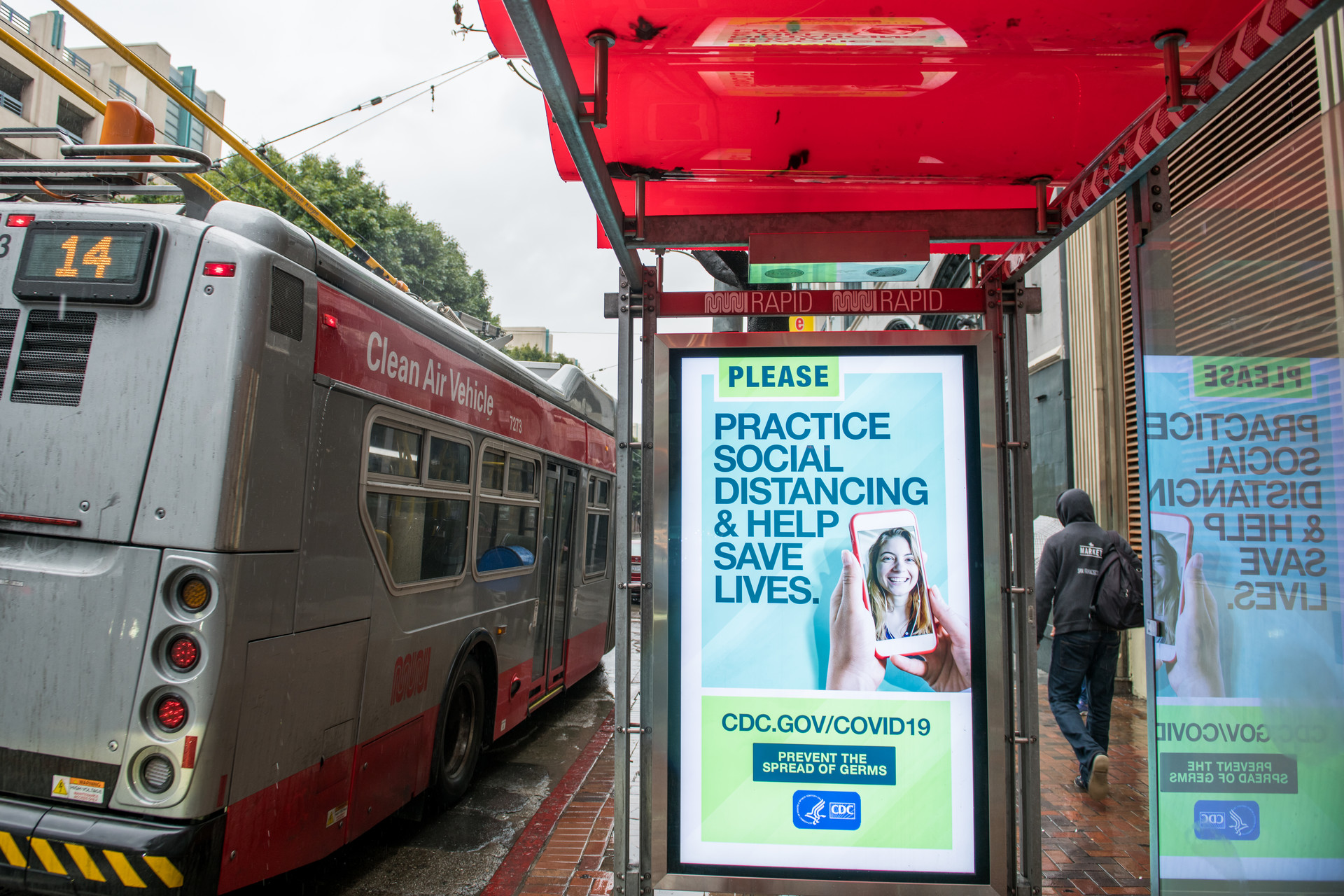
Sheltering in Place
Q: What’s OK during shelter in place? Walking a pet and exercising? Can I drive to the beach to walk or drive to Marin to hike? — Katy
You can leave your residence to do the following things:
- Buy food, groceries or supplies
- Obtain medical care
- Work at a business that’s deemed essential
- Maintain an essential governmental function or essential infrastructure
- Care for a family member or pet in another household
It’s also OK to engage in outdoor activities, such as walking your dog or going for a run — as long as you stay at least six feet away from other people. And while you’re allowed to go hiking or visit parks, read this before you go out.
Find more details about sheltering in place here.
Q: Will SFMTA still be ticketing in two-hour parking zones? Will there still be street cleaning?
When it comes to street cleaning, the San Francisco Municipal Transportation Agency (SFMTA) will maintain its regular street cleaning schedule and they will still issue citations if rules aren’t followed. If you have to leave your house to move your car, remember to practice social distancing and to wash your hands before and after. Regular rules also apply to the following:
- Fire hydrant zones
- Red and yellow zones and “no stopping” or “no parking” zones
- Parking meters
- Blocked driveways and double parking
- Parking in bike or transit lanes.
When it comes to parking enforcement, a few things have changed. The following are suspended for now:
- 72-hour parking limit and towing
- Residential permit parking (RPP) permits
- Commuter shuttles
- Peak-hour tow-away zones.
More information on SFMTA’s rules and restrictions during COVID-19.
Q: Can I still do laundry at a laundromat?
Yes. Laundromats and other laundry services are considered essential critical infrastructure.
Q: Can I drop off/pick up my tax documents at my accountant’s office?
Yes, but with caveats. Under the statewide order, professional services, like legal or accounting services, are considered essential if they’re part of “legally mandated activities and critical sector services.” But, because both the state and federal tax deadlines have been extended until July 15, you should try not to make the trip unless it’s essential.
Q: Is continuing to practice massage, acupuncture, physical therapy professionally allowed during the shelter-in-place time?
The California Department of Public Health is advising that “non-essential medical care like eye exams, teeth cleaning and elective procedures must/should be canceled or rescheduled.” If possible, remote options for health care visits should be utilized, as you shouldn’t expose yourself or others by providing or pursuing care if it can wait a few weeks.
Q: My daughter has a boyfriend she sees ALL the time. She lives at home with me and he lives home with his mom. What’s the shelter-in-place rule?
As hard as it is to stay away from friends and family, the shelter-in-place order doesn’t allow people from two separate households to physically meet, according to Santa Clara County health officials. This prevents the spread of COVID-19 from house to house. But video chat apps like FaceTime or Skype are good alternatives!
Q: Does a house cleaning service fall under the essential business category?
House cleaning services are allowed to continue operating if their services are “necessary for health and sanitation,” according to the Santa Clara County Department of Public Health.
The statewide order is less clear, but it states that “workers … and other service providers who provide services that are necessary to maintaining the safety, sanitation and essential operation of residences” can continue working.
Q: Can I drive to see family in Southern California?
According to the state order, essential activities are permitted. So, if you’re traveling to care for a family member, that’s OK. But otherwise, the governor’s order says to stay at home.
Q: Our son has been sheltering in place with a family member in Florida but wants to come home. How can we reunite soon?
Residents who were traveling when the shelter-in-place order went into effect are permitted to return home. The CDC has recommendations on how to safely travel on public transportation, including airplanes.
Q: If I have a second home elsewhere in California, can I go shelter-in-place there?
Possibly. But you’ll have to check orders from the health officers in the county you want to move to and comply with any requirements at your destination. In Trinity County, for example, the health officer is requiring people who return to a second home there to self-quarantine for 14 days.
Q: My boyfriend and myself each live alone in our own homes. Is it safe for me to continue to stay at his home a couple nights a week?
The statewide shelter-in-place order instructs California residents to stay at home and leave only for essential activities. According to the order, this is not considered an essential activity and risks transmission between households. Some couples who aren’t cohabitating have found creative ways to stay connected — including FaceTime, Zoom or live-streaming concerts together.
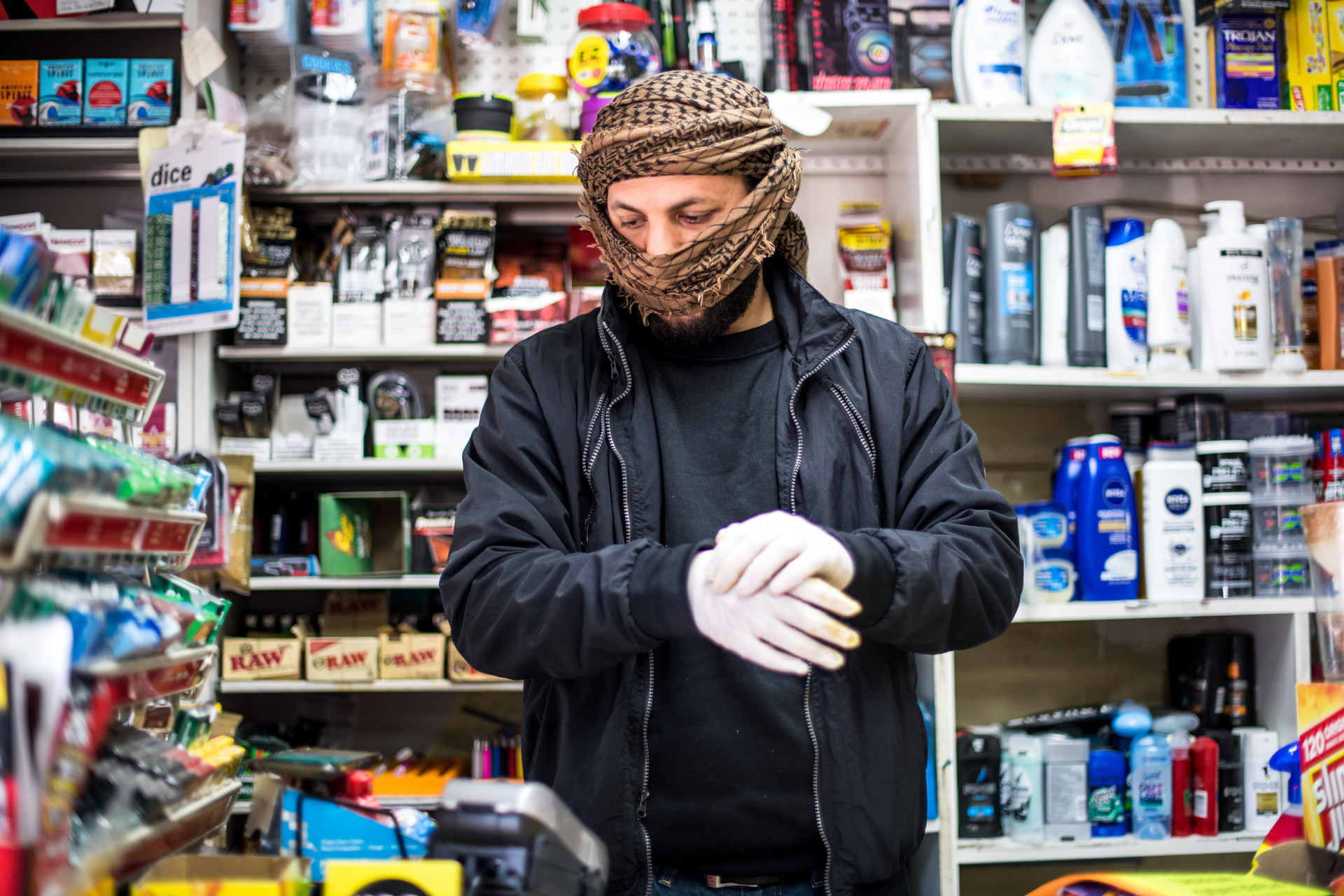
Going to Work
Q: If I am being asked to work and my work is non-essential, who can I report that to?
If you believe a business is not essential and should not be open, you can get in touch with the local mayor’s office or county sheriff’s department. The closures are being negotiated on a case-by-case basis using the California state guidelines. Santa Clara County, one of the worst hit so far by the virus, has set up a hotline.
You can read more about what to do here.
Q: Can my nanny continue to work? What kind of child care is allowed? — This is an aggregate of several, similar questions
Nannies and babysitters caring for a child in the child’s own home can continue working, if they’re supporting a worker in an essential sector.
Day cares are allowed to stay open, but only for children of parents working in essential sectors.
Read more about child care rules under shelter-in-place here.
Q: If one member of the household must continue to work (for example, they work at a grocery store) how can they minimize impact on the others in the home?
According to Dr. Alexei Wagner from Stanford Health Care, essential service employees should take reasonable precautions to protect themselves while at their job. Keeping distance from colleagues, washing hands regularly and wiping down their desk and keyboard are all good steps to practice.
To minimize risk at home, practice home hygiene.
“Take your work clothes off from outside the front door, carry them directly into the laundry, wash hands and shower thoroughly,” Wagner said.
If you live with high-risk age groups, like people in their 60s and 70s, there should be additional restrictions, like avoiding sharing spaces or touching each other.
And if you develop symptoms of COVID-19 — fever, cough or difficulty breathing — do not report to work. Instead, contact your occupational health services.
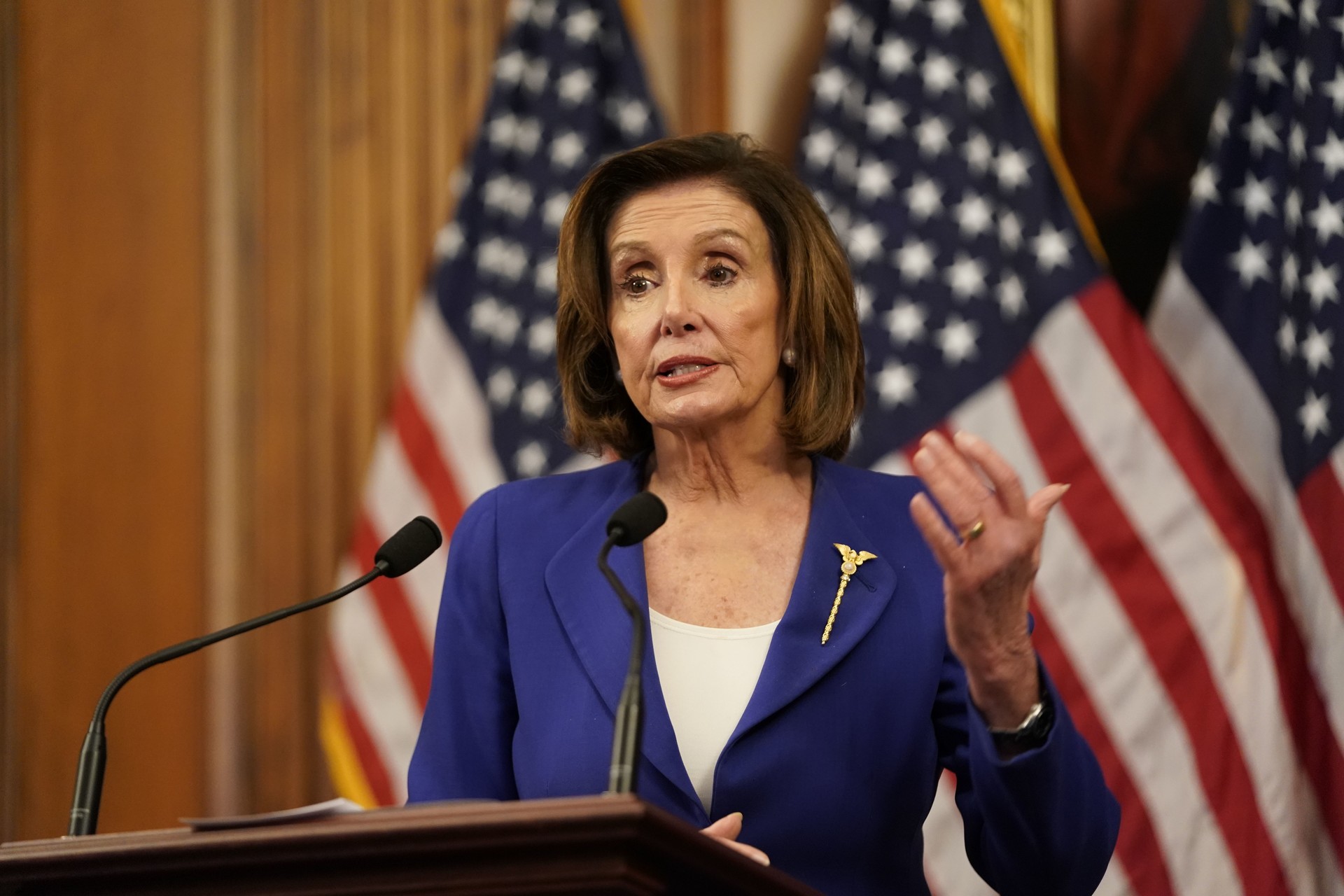
Government Response
Q: Does eligibility for the coronavirus stimulus package account for geographic cost of living? You need a higher adjusted gross income (AGI) in places like San Francisco or New York City.
No, the coronavirus economic impact payment does not account for the cost of living in different regions of the United States. So, it’s the same amount whether you live in Harlingen, Texas, or Manhattan, New York.
You’re eligible for $1,200 if you’re a single adult with an adjusted gross income of up to $75,000, head of your household making $112,500 or a married couple filing jointly with a combined income of $150,000. Couples will get $2,400. Families with qualifying children will receive an additional $500.
The payment is reduced by $5 for each $100 above the thresholds listed above. Single adults making $99,000, heads of households making $136,000 and joint filers making $198,000 with no children will not be eligible for payments.
You can find more information about the payments here.
Q: Are any deliberations happening to delay tax payment deadlines either on the local or federal level (personal property or income)?
Both California state and federal tax deadlines have been extended by 90 days — until July 15.
Q: I’m a disabled senior who “lives” on monthly SSI payments. Will we be receiving a coronavirus relief check?
Californians who are disabled — as well as those who may be sick, quarantined, providing care for a family member or otherwise unable to work as a result of COVID-19 — can file a disability insurance claim online. The state’s Employment Development Department (EDD), which manages unemployment and disability insurance, says that income received through federal programs such as SSI or Social Security will have to be reported when filing for a claim.
You can learn more about how to file for California’s unemployment and disability insurance here.
Q: How is the coronavirus affecting undocumented workers, and is there any help available to them?
Many undocumented workers have lost their jobs in restaurants, construction, janitorial services and other hard-hit industries. We know this from interviews with advocates, school officials and workers themselves.
But we don’t have a good estimate on exactly how many of the state’s nearly 2 million undocumented workers have been left without income partly because they can’t file for unemployment benefits, even if they pay taxes (which many do, using an Individual Tax Identification Number). Unauthorized immigrants are also excluded from the $2.2 trillion federal aid package signed by President Trump last month.
On April 15, Gov. Newsom announced California will provide one-time $500 checks to undocumented adults impacted by the pandemic, the nation’s first such initiative. Immigrant and workers rights advocates applauded the move, but said it won’t be enough for struggling families to live on. They are calling on the state to offer jobless undocumented Californians a weekly payment while the emergency continues, which the the Latino and Asian Pacific Islander Legislative Caucuses support.
Cities like San Francisco, Oakland and San Jose are also raising money for nonprofits to give cash assistance and other services to vulnerable residents, regardless of immigration status (some of those funds are available here). There are grassroots efforts to help as well, such as by teachers in Oakland and San Francisco pledging their stimulus checks to struggling families at their schools.
— Farida Jhabvala Romero
Q: ¿Cuándo podrán los Californianos indocumentados solicitar asistencia monetaria del estado y quién calificará? // When can undocumented Californians start applying for state cash aid and who will qualify? (Leer en español)
Starting May 18, undocumented Californians impacted by the COVID-19 pandemic will be able to apply for an emergency, one-time grant of $500 per adult, with a cap of $1,000 per household, according to the Governor’s office. Non-profit organizations listed here will help people apply and distribute the aid directly to applicants.
To be eligible, undocumented adults must have experienced hardship as a result of COVID-19 and not qualify for federal emergency help or unemployment insurance benefits, says the Department of Social Services, which is administering the disaster relief fund.
For more information on California’s Disaster Relief Assistance for Immigrants Project here. The state has also put together a list of other resources for immigrant Californians here.
— Farida Jhabvala Romero
Q: Are immigration courts still operating as normal, with crowded rooms?
The agency that oversees immigration courts, the Executive Office for Immigration Review (EOIR), said most courts remain open only to receive filings and conduct the hearings of people who are detained. All other cases have been postponed.
But how those detained hearings are conducted depends a lot on individual courts, according to attorneys. Usually, the detainees appear at their hearings via video teleconferencing, while judges must show up at the courtroom in person. In San Francisco’s immigration court for example, attorneys, witnesses and interpreters can be physically present at court or request to appear via phone.
The National Association of Immigration Judges (NAIJ) has repeatedly called for immigration courts to close during the pandemic, to protect the health and safety of judges, attorneys, detained individuals and others who participate in hearings. California Sen. Dianne Feinstein and other lawmakers support temporary court closures as well.
NAIJ says lawyers and respondents’ relatives continue to travel to immigration courthouses to advocate for their clients or see loved ones and appear as witnesses.
EOIR has responded that current operations are “largely in line” with that of most federal courts which have continued to hold critical hearings while deferring others, which NAIJ disputes.
— Farida Jhabvala Romero
Q: Did the toilets of the Grand Princess cruise ship drain into the Bay?
Over the past few weeks, crews have pumped more than 1 million gallons of raw sewage from the Grand Princess cruise ship and dumped it in East Bay sanitary sewers for treatment. Learn more about what’s going on with the Grand Princess here.
Travel
Q: Does it seem likely that airplanes are going to be treated like cruise ships — that is, if there is someone on board who is sick and is thought to have the coronavirus, that all passengers will be quarantined?
According to CDC guidelines, if someone on board an aircraft is thought to have the novel coronavirus, airline staff are instructed to separate them from other passengers by 6 feet, if possible, and provide them with a face mask.
Once the plane has landed, CDC quarantine station staff will conduct an assessment of the sick traveler’s symptoms and exposures and potentially transport them to a health care facility for further testing. The CDC will then “update the airline about the results of the testing and any need for follow-up of exposed crew members or passengers.”
Q: Is it safe to take cruises?
The CDC is recommending that all travelers, especially those with underlying health conditions, avoid traveling on cruise ships for now.
Symptoms
Q: Are there any cases in San Francisco?
We’re keeping a running update on the spread of the coronavirus in the Bay Area here.
Q: What does it look like if someone has mild symptoms?
It’s hard to say.
“One of the challenges with the COVID-19 virus is that there’s this huge range of symptoms,” says Dr. Alexei Wagner. “But there are symptoms that are seen more often in patients with COVID-19: cough, shortness of breath, fever, fatigue — we’re seeing upwards of 90% of patients testing positive have these symptoms. This is based on information from all the patients in China and some new studies that are coming out of Germany, Italy and the U.S.”
Q: How many days might you be infectious before/without symptoms?
“We think the incubation period for this disease — of when you’re exposed to a viral particle to getting it — is anywhere from two to six days. And then symptom-onset of fever, shortness of breath, or cough — we’re seeing people infected for up to about 14 days, but this is really dynamic and this may change as time goes on,” said Dr. Wagner.
Vulnerable Populations
Q: There’s been a lot of discussion of the threat for many immunocompromised people. Does this mean that the average person — maybe the younger population or people who are healthy — don’t run a risk of having extreme complications? — Laura, KQED Forum
“It’s a relative thing. No one has zero risk of a more severe course,” said Dr. David Relman, professor of medicine, microbiology and immunology at Stanford University. “But the big numbers say that, on average, if you are 40 [years old] or less and have no major underlying illness … your likelihood of a mild disease or perhaps even asymptomatic disease course is quite good.”
Q: How are the families and nursing home facilities dealing with lockdown? Many seniors are facing isolation from families and confusion. — Asked by Maria Maier
A lockdown at long-term care facilities means residents don’t have visitors, don’t get to eat food together and don’t get to participate in communal activities, like movie nights and bingo. The state public advocates for nursing home and assisted living patients — called long-term care ombudsmen — say that they’re worried about social isolation for their clients. So are nonprofit advocates, like the California Advocates for Nursing Home Reform.
If you want to help, the California Association of Health Facilities recommends checking in with individual facilities in your neighborhood, sending notes, cards or flowers to care homes, and if you’ve got spare iPads or iPhones, donating them so that residents can video chat with people outside.
We’ve reported on nursing home issues here.
Q: Do you have recommendations for women who are pregnant that would be different from the regular community?
Dr. Alexei Wagner said that the College of Obstetrics and Gynecology has not seen “a high risk to the moms or the fetuses” from COVID-19.
“However, we are still recommending that anyone pregnant or planning to become pregnant do take extra precautions to limit exposure to someone who may be positive or at risk of having the COVID-19 virus,” said Wagner.
Q: I finally saved enough money for IVF using a donor embryo. What is the impact of the virus on both sperm and egg donors and a pregnancy?
There is limited data about the impact of COVID-19 on pregnancy. But according to the WHO, there is currently no known difference between the clinical manifestations of coronavirus in pregnant and non-pregnant people.
However, the Society for Assisted Reproductive Technology recommends people who test positive for coronavirus should avoid getting pregnant or an embryo transfer until they recover. A 2017 study found that running a fever — one of the common symptoms of COVID-19 — during early pregnancy may be linked to birth defects.
Research about COVID-19 and fertility is ongoing. There are no studies so far that suggest the virus impacts fertility, but there may be limited access to fertility treatments during the coronavirus pandemic. On March 17, the American Society for Reproductive Medicine recommended the suspension of new treatment cycles (including IVF) and is encouraging people to consider canceling embryo transfers and suspend elective fertility-related surgeries or procedures.
Q: Is it safe to use an asymptomatic dog walker if the dog owner is over 65 and technically part of a vulnerable population?
According to Yvette Johnson-Walker, lecturer of veterinary clinical medicine at the University of Illinois Urbana Champaign, “The risk of COVID-19 spreading to humans from pets, from pet to pet, or from pet to humans, is tiny.”
But, she said, there’s still a lot that we don’t know.
“There was a case in Hong Kong where a dog got a very mild case of COVID-19 from a patient who tested positive for the virus. Health authorities in Hong Kong urged pet owners to not kiss their pets after this case,” said Johnson-Walker. “That being said, the same rules apply to pet owners as everyone else: If you play with a friend’s pet, wash your hands afterwards. The dog walker should be washing their hands before and after walking the dog and should practice social distancing while walking the dog.”
You can find more information on COVID-19 and how it relates to pets here.
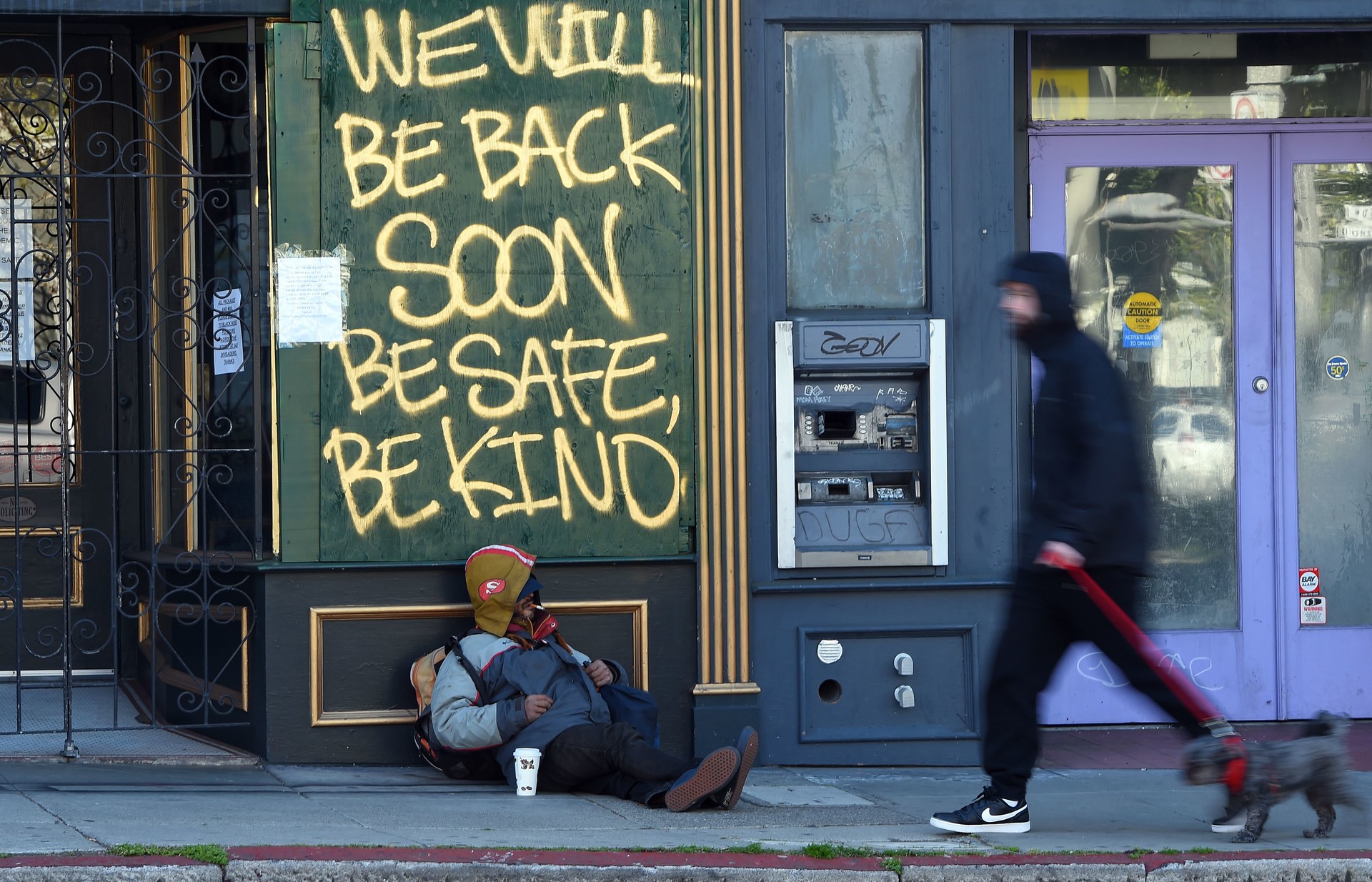
Homeless Populations
Q: What is the plan to deal with homeless people who contract the virus?
In many counties across the state, officials are working to secure hotel rooms for people who have nowhere to self-isolate and have either tested positive for the coronavirus or are awaiting test results. People who are considered high-risk for complications — if they are elderly or have underlying health conditions — may also be considered for placement in the hotel rooms. On April 3, Gov. Gavin Newsom said the state had negotiated leases for nearly 7,000 hotel rooms statewide, with a goal of ultimately securing 15,000 hotel rooms. These rooms are available for people who are living in congregate settings, such as single-room occupancy hotels or shelters, as well as those who are living in tents, cars or RVs.
In some other counties, officials have also opened temporary shelters to create more space to allow for social distancing within their existing shelters. The state is also distributing about 1,300 trailers that many counties are using to isolate people who have tested positive for the coronavirus or are awaiting test results and need behavioral or mental health services.
Counties are not putting people who are unsheltered into shelters, unless they have first been quarantined, but are distributing tents to people who don’t qualify for the hotel rooms to create more social distancing within camp communities. Many counties around the Bay Area have installed, or are planning to install, hand washing stations and portable toilets in camp communities as well.
Newsom has said the state will distribute $150 million to cities and counties throughout the state to assist them in housing people who live in encampments or to expand shelters. FEMA has agreed to cover 75% of the cost for hotel rooms, with the state supplying the remaining 25% of the cost.
Q: How can we help people who aren’t able to help themselves? Like the elderly, single parents, homeless, etc?
Volunteer your time! Many homeless service providers and organizations that support vulnerable populations rely on volunteers. But since many of those volunteers are now staying home, they are scrambling to provide food and other services.
Some neighborhoods are organizing grocery and meal support for seniors on your block. You could start an email listserv and encourage your neighbors to sign up.
Donations are the most flexible kind of support you can provide to nonprofit organizations at this time. That will allow those organizations to use those funds on whatever they need most, be it more cleaning supplies or additional staff.
The San Francisco Chronicle compiled this list of homeless organizations around the Bay Area. Find one near you!
Here are some other ways to help. Additionally, the state recently created a new website for people who want to volunteer or find other ways to help.
Q: Is the city continuing to do sweeps of encampments?
That depends on which city you’re talking about. There are 101 cities in the Bay Area and many unincorporated areas that are under the jurisdiction of nine counties. So, policies will vary depending on the location.
But, in the Bay Area’s three largest cities — Oakland, San Francisco and San Jose — encampment sweeps have stopped, barring any public health concerns that would necessitate relocating people elsewhere.
The CDC has released guidelines that recommend against clearing encampments.
Q: I want to know about the homeless encampments. I want to know every aspect of what is being done. Human feces is a vector.
In San Jose, officials have distributed hand washing stations, portable toilets and clean water to 14 encampments, as well as arranged for trash pickup. The city is also partnering with the nonprofit WeHOPE to operate a mobile medical trailer with virtual doctor’s visits. The organization will help distribute hygiene kits with hand sanitizer, gloves, masks, fresh fruit and healthy snacks to encampments on a biweekly basis.
Oakland city officials have installed 42 hand washing stations and portable toilets at 19 encampments and increased garbage pickup at camps. Outreach teams are distributing hygiene supplies to encampments, community cabin sites and RV safe parking sites. City officials said, barring any public health concerns, it will refrain from carrying out scheduled encampment sweeps during the COVID-19 health crisis.
In San Francisco, the city has deployed hand washing stations to complement its Pit Stops — which are in 24 locations throughout the city and have a toilet and sinks, needle disposal and pet waste disposal.
City outreach workers are continuing to conduct outreach, but now are focusing on providing education and giving out hygiene supplies at encampments. San Francisco has also procured 30 RVs to house people who have tested positive for COVID-19 but don’t need to be hospitalized and don’t have a place where they can isolate themselves from others. San Francisco is also renting hotel rooms for people who don’t have the virus but might need to be quarantined.
You can find more information on what Bay Area counties are doing, and how you can help, here.
Kids
Q: I’ve read reports that children are not as effected by the coronavirus as adults are. Any idea why?
According to early data, kids overall appear to be less susceptible to the disease, though it’s not clear why.
Q: How should parents manage children’s education while schools are closed? Most of us are not trained educators; we need some help. — Asked by Sally M.
First, take a step back and realize that this isn’t going to be school as usual. That’s advice from Denise Clark Pope, a senior lecturer at Stanford’s Graduate School of Education.
“This is not going to be, 8 a.m. to 3 p.m.,” said Pope. “And in the grand scheme, you might want to think about it in terms of playtime, downtime and family time.”
In that spirit, we like this crowdsourced “Giant List of Ideas for Being Home with Kids.”
We’re finding that many local school district websites are posting links to lesson plans and advice for parents and students — like this example at West Contra Costa Unified. So check your local district out. Plus, the California Department of Education has directions and examples for online learning on their site.
On the less formal side, we’ve collected other tips for distance learning ideas here, including how KQED/PBS programming can help families, and advice on topics such as how to talk to kids about trauma.
Q: Can you provide a child-friendly way to explain quarantines and social distancing? Kids also need to understand why the grown-ups are worried.
It depends on the child’s age, says Denise Clark Pope, senior lecturer at Stanford’s Graduate School of Education.
“It’s OK to say this is a really different kind of time and to let them know it’s OK to be scared and say, as a grown-up, ‘I’m scared, too,’ ” said Pope. “Let them know we’re here together as a family for a reason and school is closed so we can keep people safe. And you’re not going to do a play date today because it’s our job to keep everyone safe.”
PBS Kids sends this advice for talking to younger children. And NPR’s Malaka Gharib created this comic specifically for kids who may be scared or confused about the coronavirus.
The NPR Education team adds this advice: Keep it simple, age-appropriate and fact-based. For example, don’t tell your child they won’t get COVID-19; you don’t know that. Instead, the CDC suggests telling children that, from what doctors have seen so far, most kids aren’t getting very sick. In fact, most people who’ve gotten COVID-19 haven’t gotten very sick. Only a small group have had serious problems.
And, channeling the great Mr. Rogers: Look for the helpers. Assure your kids, if they — or someone they love — do get sick, the world is full of grown-ups who will help.
Q: What KQED resources can teachers use as we strive to perfect our online teaching? As an art teacher I will peruse SPARK. Other resources? — Asked by Pat O’Connor
We got you! KQED’s education team has a whole page up about KQED developed resources for teachers right now. Check it out here and we hope you find what you’re looking for!
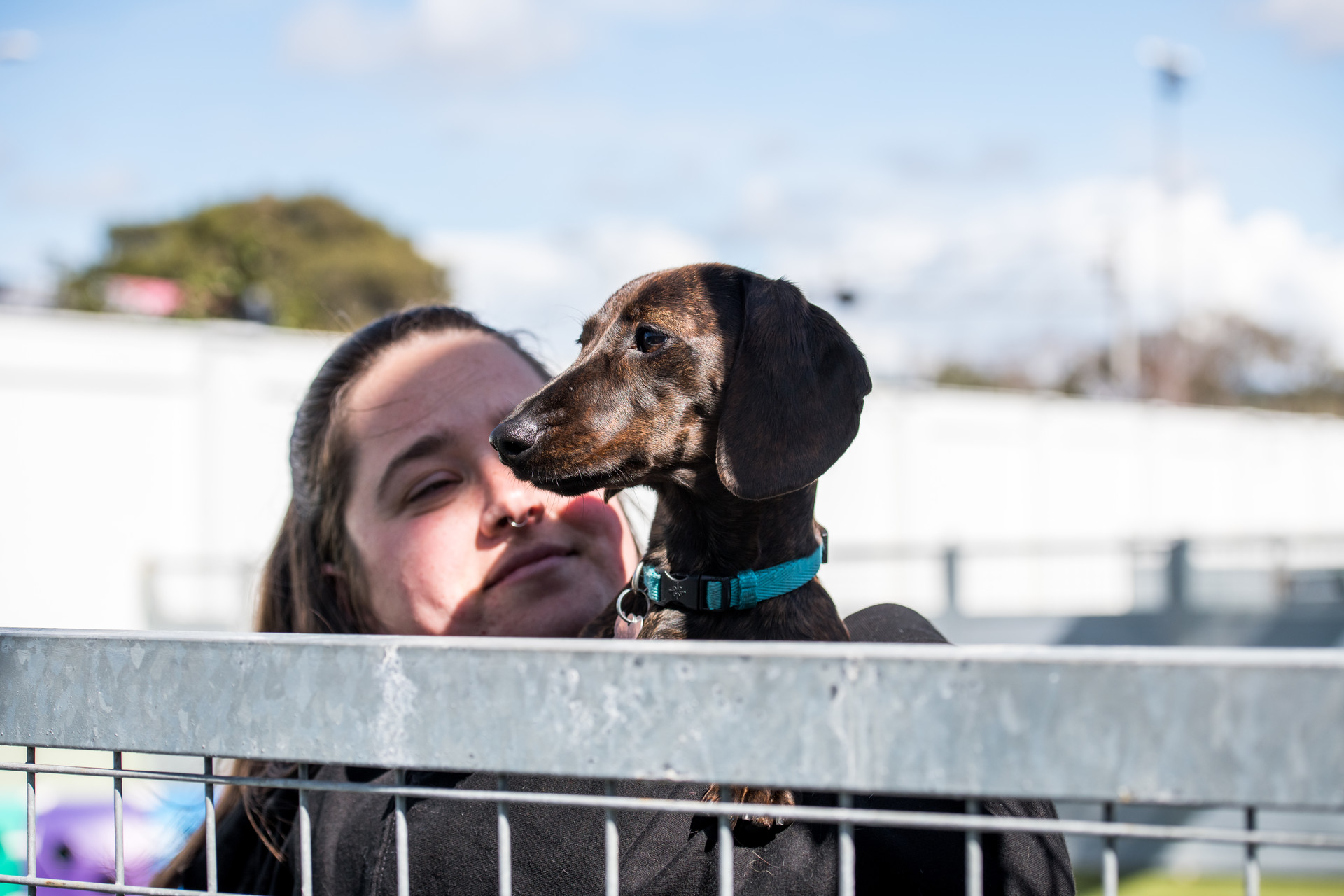
Pets
Q: What advice do medical professionals have for people walking their dogs?
The American Veterinary Medical Association encourages pet owners to interact with their pet normally, including walks, as long as you are adhering to both social distancing guidelines — like staying at least 6 feet away from other people — and any shelter-in-place mandates. Read more on pets and coronavirus.
Q: Can dogs carry the coronavirus?
There is no evidence that a dog or cat infected with the virus can transmit it to humans. However, the virus could live on your pet’s fur, just like it can live on a doorknob or other surface. Wash your hands after touching pets, their waste, food or supplies, and avoid touching your face. Read more on pets and coronavirus.
Q: Can I give my pet the coronavirus?
As far as we know, pets don’t get the disease caused by the virus. But, if you are sick with COVID-19, you should avoid contact with your pet as a precaution. You could transmit the virus to another human on your pet’s fur. Read more on pets and coronavirus.
